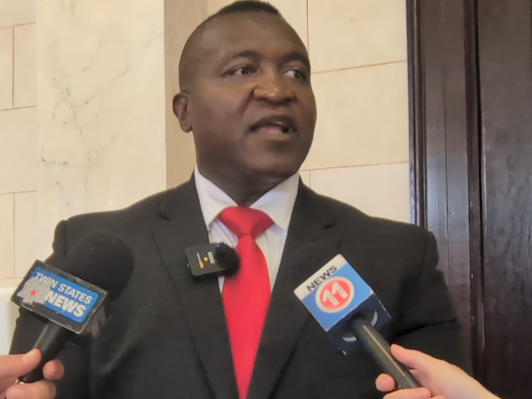Police use of stun guns in Massachusetts increasing
Published 6:45 am Wednesday, October 26, 2016

- Taser
BOSTON — Police in Massachusetts are increasingly using stun guns to subdue unruly suspects, a tactic questioned by civil liberties groups but touted by law enforcement as more humane than other types of force.
Police agencies reported 1,102 incidents involving Tasers or stun guns in 2015 — an increase of more than 12 percent from the previous year, according to newly released data by the state’s Executive Office of Public Safety and Security.
That’s up from only 275 incidents reported in 2010.
At least 619 of the cases last year escalated to the point where a Taser or stun gun was deployed, or fired, at a suspect, according to the state’s data.
Statewide, 230 police agencies are authorized to use electronic control weapons, and 4,223 such weapons were in use in 2015. That’s a 25 percent increase in the number of weapons from a year earlier.
Law enforcement officials say stun guns, when used properly, can prevent death and injury.
“It’s not only reduced injuries to people being placed under arrest, but also injuries to police officers,” said Mark Leahy, a former Northborough police chief and executive director of the Massachusetts Chiefs of Police Association.
“It’s far more humane than using batons or night sticks as non-lethal weapons, which can cause fractures and lacerations requiring stitches because the impact,” he said.
In some cases, officers prepared to trigger a stun gun convince a suspect to surrender.
“For some people, when an officer fires a warning spark, that’s enough to stop the resistance,” Leahy said.
Overall, Massachusetts law enforcement agencies reported at least 4,393 incidents involving stun guns from 2011 to 2015.
Lawrence reported the second-highest numbers of incidents in the state, with 180 during that five-year period. Only New Bedford, with 471 incidents, had more.
Lawrence police chief James Fitzpatrick attributed the high number to the department’s policy of equipping patrol officers, detectives and special operations officers with Tasers and training them to use the devices to deescalate violent situations.
“When you’re faced with someone armed with a knife, they’ve been very effective,” he said. “We even use them with people who are overly combative.”
Currently, the department has 14 Tasers and expects to purchase additional devices in coming years.
Danvers police reported 27 incidents involving stun guns from 2011 to 2015; Peabody 15, Andover 11 and Beverly 7, according to state data.
When fired, Tasers shoot two spear-shaped probes that penetrate the skin. Copper wires attached to the probes emit a 50,000-volt shock of electricity, forcing muscles to seize and usually sending the person collapsing to the ground. Other stun guns must touch an individual’s skin or clothes.
The increasing use of the electronic devices by law enforcement in other states has raised concerns by groups such as the American Civil Liberties Association and Amnesty International, which argue that minorities are disproportionately targeted.
From 2001 to 2015, at least 670 people in the United States were killed by stun guns while under arrest or in jail, according to Amnesty International.
Some groups are pushing for national guidelines on the use of Tasers, rather than individual police departments setting their own policies. And there has also been calls for restricting use of the devices against certain populations, including pregnant women, the elderly and mentally ill.
In Massachusetts, nearly 70 percent of the incidents where police brandished electronic devices last year involved white suspects, and more than 90 percent were male, according to the state data. Blacks were involved in about 17 percent of the cases, Hispanics 13 percent.
In incidents where warnings didn’t work, however, Hispanic males between 50 and 54 were most likely to be jolted by Taser darts, according to state data.
More than 100 police departments in the state still are not certified to use Tasers. Leahy said the cost — which can run upward of $1,000 each — makes it difficult to arm every officer, so some departments share devices.
“They’re not cheap, as opposed to a baton or a can of pepper spray,” he said. “And there’s not a lot of state or federal grant money available.”
Meanwhile, Massachusetts remains one of five states that outright ban private ownership of stun guns or Tasers.
Some stun guns are commercially available for less than $20 and are legal in 42 states including New Hampshire, Vermont, Maine and Rhode Island.
In most cases, owners must be at least 18 old and not have a felony record, but some states require a permit.
Last year, the Massachusetts Supreme Judicial Court essentially upheld the ban by ruling against a woman arrested with a stun gun in 2011.
She told police she needed the device for self-defense against an abusive ex-boyfriend. The court ruled that she could have applied for a gun permit or bought pepper spray, both of which are legal, but that stun guns are not protected by the Second Amendment.
Legalizing ownership, the court said, is a matter for the Legislature.
Despite a perennial push on Beacon Hill by gun advocates, efforts to pass legislation lifting the ban on Tasers and stun guns have failed to pass.
Christian Wade covers the Massachusetts Statehouse for the North of Boston Media Group’s newspapers and websites. Reach him at cwade@cnhi.com.





